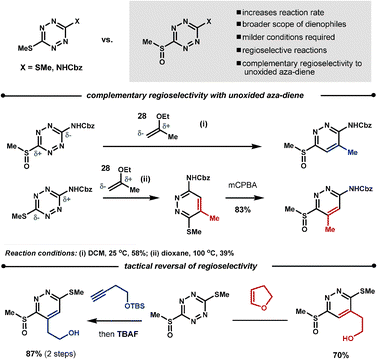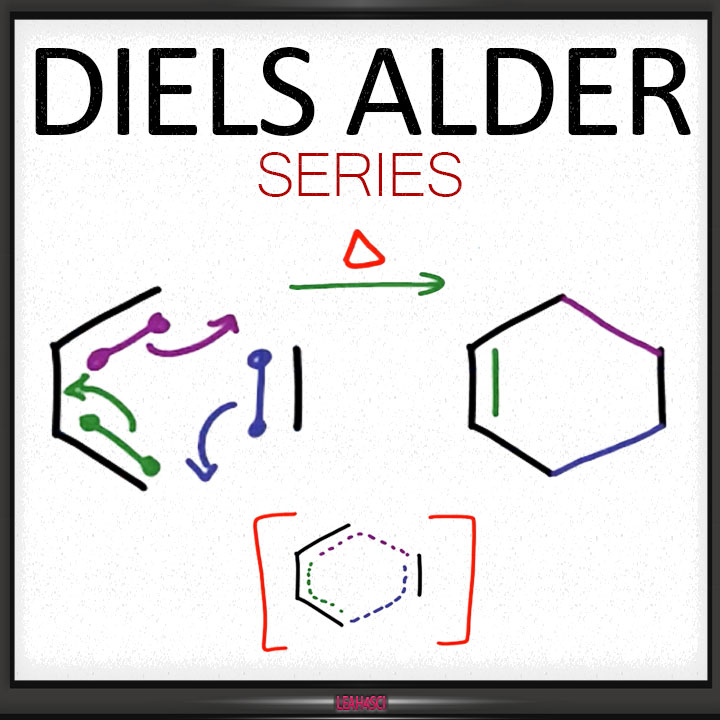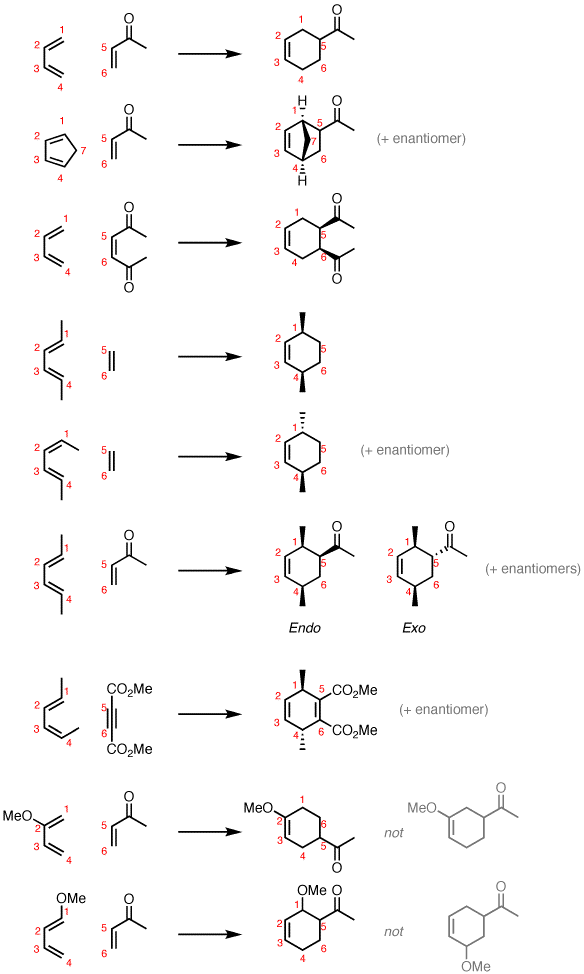

This is because both of the reactants are the least reactive. In this reaction, 1,3-butadiene react with ethene at 200✬. This is the simplest example of Diels alder reaction. Examples of Diels Alder reaction Synthesis of cyclohexene

In other cases, the reaction would be slow and requires high temperature and high pressure. So it is highly recommended to use the reactive species to get a better yield. Diels alder reaction takes place fastly with gentle heating. Similarly, if the electron donating groups are present on the diene they make the diene more reactive. It makes dienophiles strong electrophiles. For instance, electron-withdrawing groups in conjugation with a double or triple bond of diene increase the reactivity of the dienophile. The reactivity of Diels alder reaction depends upon a number of factors. Similarly in a few cases, high pressure is also required. Lewis acid catalyst may also be used in some cases. Some of the unreactive reactants required high heating. Reaction conditionsĭiels Alder reactions can take place at room temperature. New bonds are formed by using the same lobes on the same face of the reactant.īy using highly reactive species as reactants the product is a diastereomer. These reactions are also known as superficial addition reactions. Cis dienophile gives cis product whereas, trans dienophile gives trans product. The stereochemistry of Diels alder reaction depends upon the stereochemistry of dienophiles. The transition state can be represented by using arrows or dotted lines in the figure given below: Stereochemistry of Diels Alder reactionĭiels alder reactions are stereospecific reactions. This resembles the stabilization of benzene thus transition state has an aromatic character. The transition state has six delocalized 𝝅 electrons. The last arrow connects to the first arrow. Electrons either rotate in a clockwise or anticlockwise direction resulting in the formation of the same product, such that arrows are one after another. The transition state involved in this reaction has six delocalized electrons. No intermediates are formed during this reaction. Transition stateĭiels Alder reaction proceeds through a single cyclic transition state. This results in the formation of cycloalkene derivatives. The above diagram shows how the electrons move from electron-rich species to electron-deficient specie in a cycle. The formation of a sigma bond is the driving force of Diels alder reaction as sigma bonds are thermodynamically more favorable. In this reaction, two pi bonds are converted into two sigma bonds. The main overview of diels alder’s reactionĪs diels alder reaction has a concerted mechanism, all the bond breaking and bond formation take place in a single step. The reactivity of dienophiles depends upon the number and strength of electron-withdrawing groups. Normally, they are derivatives of ethene or ethyne. They may have a double or triple bond in conjugation with electron-withdrawing groups. On the other hand, dienophiles are electron-deficient specie. For diels alder reaction S-cis dienes are used, while S-trans diene can not be used because its end is not close enough to react with another alkene. They may be open-chain or cyclic compounds. Conjugated dienes are also known as 1,3- diene. It is the nucleophile having conjugated double bonds. Diene and DienophileĪ compound having two double bonds is called diene. The Diels Alder reaction highly depends upon the dienes and dienophiles used.

There are no positive or negative charge intermediates. The Diels-Alder reaction is an example of a pericyclic reaction because the reactant conjugated diene acts as a nucleophile while the substituted dienophile acts as an electrophile and the electron from the electron-rich center travels to the electron-deficient center in a cyclic way. Later, in 1950 they received the Noble prize in chemistry for this development. This reaction was named after the German Chemists Otto Diels and Kurt Alder in 1928. This results in the formation of a six-member ring with one double bond known as cycloalkenes. In the Diels alder reaction, two pi bonds are converted into two sigma bonds via a cyclic transition state. It is the 𝝅 cyclo addition reaction having a concerted (single-step) mechanism. Diels alder is the pericyclic reaction between a conjugated diene and a substituted alkene, also known as a dienophile, to form a cyclohexene compound.


 0 kommentar(er)
0 kommentar(er)
